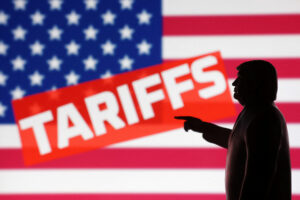PHL to continue tariff talks with US

By Justine Irish D. Tabile and Chloe Mari A. Hufana, Reporters
THE PHILIPPINE government is optimistic that a deal on tariffs can be reached with the US, as it is set to continue negotiations for a lower tariff rate.
“The negotiation is a process. Not a one-time meeting. We believe the meeting went very well and our points were well received,” Trade Secretary Ma. Cristina A. Roque said in a statement on Monday.
Ms. Roque, Special Assistant to the President for Investment and Economic Affairs Frederick D. Go and Philippine Ambassador to the US Jose Manuel D. Romualdez met with the US Trade Representative (USTR) Jamieson Greer in Washington on May 2.
Before the trip, the Trade secretary said that the aim is to bring back the tariffs to at least the pre-“Liberation Day” level.
Last month, US President Donald J. Trump announced higher reciprocal tariffs on most of the country’s trading partners, with Philippine goods facing the second-lowest rate in Southeast Asia at 17%.
However, the reciprocal tariffs have been paused for 90 days until July. A baseline 10% tariff remains in place.
At a Palace briefing, Mr. Go said there will be more meetings with the USTR, although the Trade Undersecretary Allan B. Gepty would lead the talks.
He did not elaborate on a timeline.
Mr. Go said the meeting with the USTR focused on the local semiconductor and electronics industries since these are the top exports to the US.
Discussions also centered on the coconut, garment, furniture, food processing, and automotive industries, he added.
“The coconut industry is very important to us because it is our number one agricultural export to America,” he said in Filipino. “We brought up all the concerns and issues of our stakeholders, and as I said earlier, I believe it was very well received.”
In 2024, the US was the country’s top export market, receiving $12.12 billion worth of Philippine goods. The US was the Philippines’ fifth-largest source of imports accounting for $8.17 billion.
The Philippines’ top exports to the US are semiconductors, electronic integrated circuits, and insulated wire and other insulated electric conductors.
The country’s top imports from the US are soya beans, electronic integrated circuits, and wheat and meslin.
When asked if the USTR had committed to lowering the 17% reciprocal tariff imposed by Mr. Trump, Mr. Go said, “Let’s allow the process to take place.”
“I ask for your patience; let’s just wait for the outcome,” he added.
He refused to divulge if the US promised anything during the dialogues due to confidentiality agreements but noted it will take several negotiations to reach a favorable resolution.
The Foreign Trade Office of the DTI will now handle the negotiations with their American counterparts, he noted.
“We have to let the technical working groups work on a framework for discussions… both sides will have to work together to put a framework before the 90-day moratorium period is over,” he added.
Mr. Go noted the Philippine delegation was “well prepared” for the meeting, adding they discussed with Cabinet officials and the business sector before flying out.
Meanwhile, Department of Economy, Planning, and Development (DEPDev) Undersecretary Rosemarie G. Edillon said that the meeting with the USTR showed the Philippine government’s intention to strengthen trade relations with the US.
“We are very interested, especially in our trade relations, and to inform them of our initiatives to reduce, if not totally eliminate, what they call nontariff barriers,” she added.
Asked to comment, former Trade Undersecretary Rafaelita M. Aldaba said that the Philippines should get “as many products as possible in the exemption list.”
“In exchange we can offer zero tariffs on products that are important to the US,” she added.
In previous statements, Ms. Roque said that the Philippines might increase imports of US products, particularly soybeans and frozen meat, in exchange for lower tariffs.
According to the DTI Export Marketing Bureau, the US was the country’s third-largest trading partner last year, with total trade amounting to $20.29 billion.
Ateneo School of Government Dean and Economics Professor Philip Arnold P. Tuaño said that the country should also seek the reauthorization of the Generalized System of Preferences (GSP) while negotiating for lower tariffs.
“We should negotiate for lower tariffs on Philippine goods entering the United States and possibly also request the USA to reauthorize the GSP, which allows eligible developing countries to export their goods to the US tariff-free,” said Mr. Tuaño in an e-mail.
“[We should] also argue for preferential rates for strategic goods under the supply-chain resilience program, such as semiconductors and agricultural products,” he added.
While active, the Philippines was the GSP’s fifth-largest beneficiary, with about $1.6 billion in duty-free exports in 2020. This made up 10% of the total US GSP imports, which amounted to $16 billion.
The trade preference scheme eliminated duties on approximately 5,000 or 47% of the total US tariff lines. However, these benefits expired on Dec. 31, 2020.




